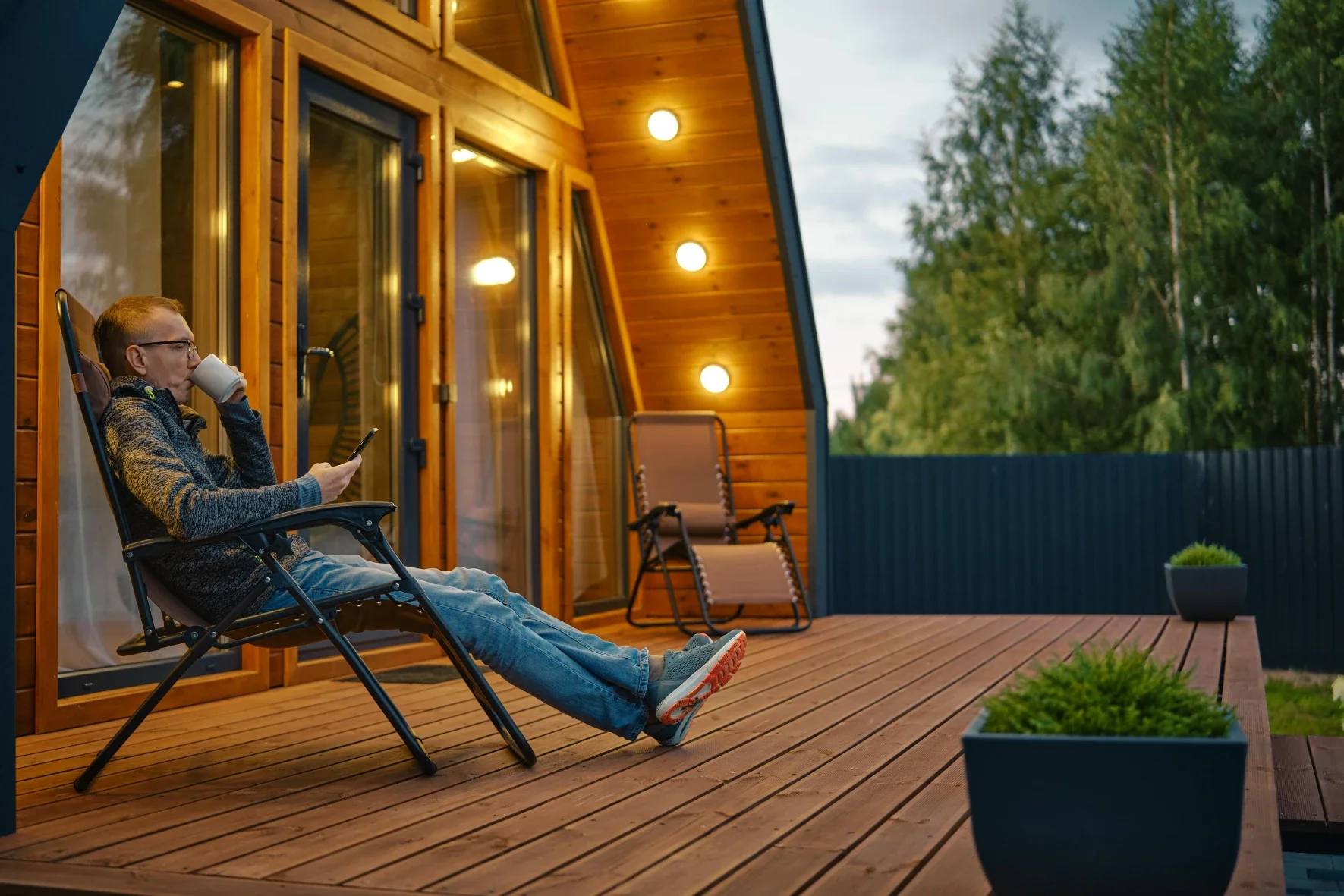Secure Your Deck for Winter: Ultimate Peace-of-Mind Checklist
Keep your deck safe all winter with essential checks and prep tips that prevent damage, boost durability, and ensure your outdoor space stays secure.
As the temperature drops, preparing your home's exterior becomes a priority. While many homeowners focus on gutters or windows, it is crucial not to overlook your deck. For those looking to take the guesswork out of maintenance, reaching out to professional deck builders in Washington is a smart move before the snow falls.
Introduction – Why Winterizing Your Deck Matters
When winter rolls in, most of us focus on staying warm indoors and forget that our outdoor living space weathers those same harsh conditions that can wreak havoc on your home. Snow, ice, and freezing cycles often take a toll on materials that aren't properly protected.
Taking the time to winterize your deck now saves you from costly repairs in the spring. It isn't just about maintenance; it's about preserving a space where you make memories. By following a few simple steps, you can rest easy knowing your deck is ready to handle whatever the season throws its way.
Step 1 – Choose the Right Deck Winter Cover
One of the most effective ways to shield your investment is by using a proper deck winter cover. A high-quality cover acts as a barrier against snow accumulation and trapped moisture, which are the primary causes of wood rot and warping. However, not all covers are created equal, and choosing the wrong material can actually do more harm than good.
You should look for materials that are breathable rather than completely waterproof. While it might seem counterintuitive, a cover that traps all moisture can promote mold and mildew growth on the deck surface. Breathable deck covers for winter allow dampness to escape while still blocking ice and heavy snow. If you are searching for a reliable winter cover for deck protection, prioritize durability and moisture control to ensure your deck emerges in perfect condition when spring arrives.
Step 2 – Protect Outdoor Living Space and Deck Furniture
Your deck isn't the only thing that needs attention. Winter can be tough on anything left outside, from seating cushions to grills, and even the small decor pieces that make your deck feel homey. A little preparation goes a long way to protect everything until spring.
Use Durable Outdoor Furniture Covers
Leaving cushions and frames exposed to the elements is a recipe for disaster. Moisture, ice, and long stretches of freezing air can wear down outdoor furniture faster than most homeowners expect. Well-fitted furniture covers create a barrier that helps prevent mold, rust, and trapped condensation. The proper fit also keeps wind from tugging at the edges and prevents loose covers from blowing away.
Incorporating outdoor patio covers for winter protection ensures that ice and water stay off sensitive materials. Even simple patio covers for winter use can significantly extend the lifespan of your set.
Store or Elevate Patio Furniture Appropriately
Not everything needs to be moved into the garage. Some robust patio furniture can stay outside if handled correctly. The key is to ensure it doesn't sit directly in puddles of melting snow.
Elevating your furniture slightly off the ground helps prevent moisture from wicking up the legs. Cold weather can make materials brittle, so avoiding direct contact with frozen surfaces is vital. If you can't store items indoors, using sturdy winter patio covers and raising them on blocks is a great alternative.
Step 3 – Clear and Clean the Deck Before Freezing Temperatures
Before the real freeze sets in, you need to perform a thorough cleaning. Leaving leaves, pine needles, and dirt on the surface traps moisture against the wood, which accelerates decay. A quick sweep now prevents a headache later.
Make sure to keep the deck clear of organic debris. Pay special attention to the gaps between boards, as clogged spaces stop water from draining properly. A clean deck not only looks better but also dries faster, reducing the risk of ice formation. It is a simple afternoon task that pays off by keeping your outdoor structure healthy and rot-free throughout the colder months.
Step 4 – Safe Practices for Removing Snow from Your Deck
When the snow piles up, your instinct might be to grab the nearest shovel. However, improper snow removal techniques can cause permanent damage to your deck's finish. Scratches and gouges from sharp tools open the door for moisture to penetrate the wood sealing.
Always use a plastic shovel rather than a metal one. Metal blades can easily slice into wood or composite decking, leaving unsightly marks. If you have a light dusting, a broom is often sufficient and much safer. For heavier drifts, shovel parallel to the deck boards to minimize the risk of catching an edge. It is best to remove snow immediately after a storm to prevent it from turning into heavy, damaging ice.
Step 5 – Prepare the Fire Pit and Fire Table for Winter
There is nothing quite like a cozy winter evening, but your heating features need care to survive the season. Whether you have a wood-burning fire pit or a gas fire table, moisture is the enemy. Rust and burner clogs are common issues when these items are left exposed.
Clean the unit thoroughly and remove any ash or debris. Most models benefit from a weather-resistant cover to shield them from freezing rain and snow. It's also a good time to inspect gas lines, burners, or spark igniters to ensure everything stays in good condition until you're ready to use them again. With these small steps, your setup remains safe, clean, and ready for winter gatherings.
Step 6 – Inspect Your Deck's Structure for Winter Durability
While you might be focused on storing deck furniture, do not forget to look at the deck itself. Winter adds significant weight to your structure in the form of snow and ice. A weakened post or a loose railing can become a safety hazard under this stress.
Take a walk around and check for loose hardware, wobbly railings, or signs of water damage on the posts. If you notice any soft spots in the wood, these need to be addressed immediately. Even specialized setups, like a winter cover for above ground pool with deck integration, should be checked for structural stability. Catching these issues early prevents minor repairs from turning into major failures during a winter storm.
Step 7 – Consider Professional Winterization from Experts
Sometimes, DIY efforts aren't enough to fully protect your home. If your deck has structural issues or complex features, calling in the pros is the safest bet. Professional services can offer deep cleaning, sealing, and structural reinforcement that is hard to replicate on your own.
Experts will also help you decide if it's time for an upgrade. You can explore new deck options if your current structure is beyond repair. By bringing in professional help when needed, you ensure every inch of your outdoor space is fully winter-ready, safe, and stress-free.
Final Thoughts – Keep Your Winter Deck Safe, Warm, and Ready for Spring
Preparing your home for winter doesn't have to be a stressful chore. By taking these small steps, you ensure your winter deck remains a safe and durable extension of your home. A little effort now means you can welcome spring with a pristine outdoor area, ready for sunshine and relaxation. Stay warm and enjoy the peace of mind that comes with being prepared!







